How to Bleed Air From Water Pipes
If you turn on the faucet expecting a steady stream of water only to experience water coughing and sputtering with a force that nearly knocks a glass from your hands, your water lines have air in them.
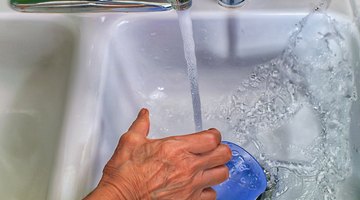
While air trapped inside the plumbing system is unlikely to cause damage to either the fixtures or the pipes themselves, it can be an aggravating, even scary, problem. Bleeding the air out is the best solution.
Things You Will Need
- Buckets
- Hoses
- Cup
Tip
If you miss any faucets or fixtures during the bleeding procedure, any air left in the system will find its way out, but it might surprise you with the familiar sputter or blast of air and water.
-
Station a bucket under as many taps in the home as possible, including in the shower or tub. Buckets allow you to catch water and use it rather than waste it down the drain as you clear the lines.
-
Connect a hose to outside faucets, and direct the open hose end to a birdbath or to outdoor plants, even to a dry lawn.
-
Turn the water on throughout the house: open every faucet or tap, flush all the toilets, run the bath, turn on the shower and start a fill cycle on the washing machine and dishwasher. Do this systematically, beginning on the uppermost floor of your home and proceeding to the lowest level. That way, you’ll catch every water line in the home.
-
Hold a cup under the cold water outlet of your refrigerator, if so equipped. Hang on to the cup as you allow water to run into it.
-
Listen for the the sound of running water and the end of sputtering and coughing. Once the taps all run only water, turn them off one by one. Move in the opposite direction that you turned them all on, closing the lowest-level faucets and working your way to the highest level of the home. That way, you’ll ensure all the faucets are off.
-
Water your plants, wash your car, or wash the dishes in the water you caught in all those buckets.

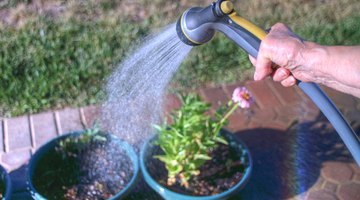
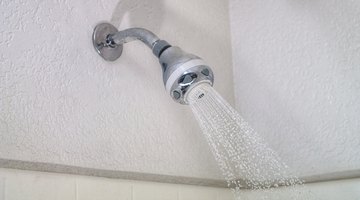
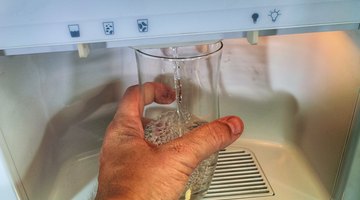
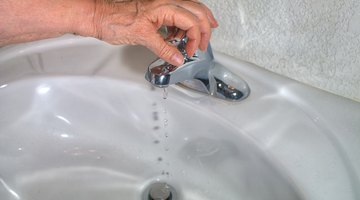
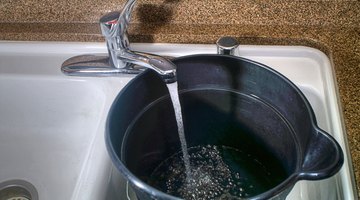
The Drip Cap
- If you turn on the faucet expecting a steady stream of water only to experience water coughing and sputtering with a force that nearly knocks a glass from your hands, your water lines have air in them.
- Bleeding the air out is the best solution.
- Connect a hose to outside faucets, and direct the open hose end to a birdbath or to outdoor plants, even to a dry lawn.
- Move in the opposite direction that you turned them all on, closing the lowest-level faucets and working your way to the highest level of the home.
References
Writer Bio
Robert Korpella has been writing professionally since 2000. He is a certified Master Naturalist, regularly monitors stream water quality and is the editor of freshare.net, a site exploring the Ozarks outdoors. Korpella's work has appeared in a variety of publications. He holds a bachelor's degree from the University of Arkansas.
Photo Credits
- Philip Sustachek/Demand Media
- Philip Sustachek/Demand Media
- Philip Sustachek/Demand Media
- Philip Sustachek/Demand Media
- Philip Sustachek/Demand Media
- Philip Sustachek/Demand Media
- Philip Sustachek/Demand Media
- Philip Sustachek/Demand Media
More Articles



